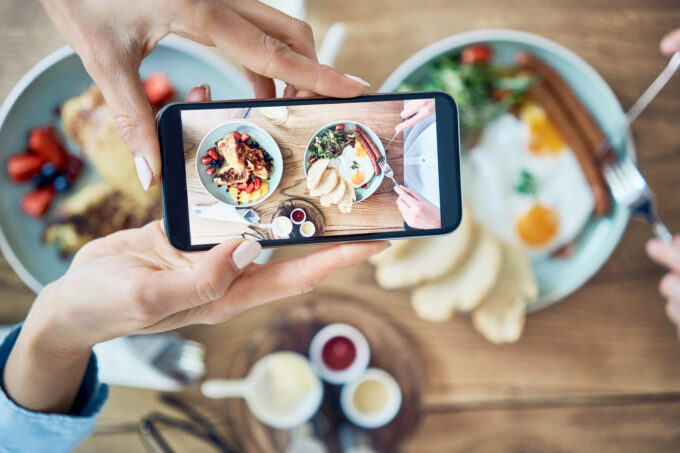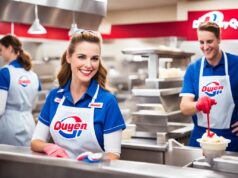Social media is indispensable to business marketing, and restaurants are no exception. Social media is a potent tool for restaurants, allowing them to showcase their food and atmosphere, interact with customers, and build a loyal following.
However, more than simply having a social media presence is required. To truly make an impact, restaurants must have a well-thought-out social media marketing strategy.
This blog post will outline five tips to help restaurants improve their social media marketing and reach more customers online.
1. Define Your Target Audience
Defining your target audience is crucial in developing a perfect SMM strategy for your restaurant. Your target audience is the specific group most likely to be interested in your restaurant’s food, atmosphere, and overall experience.
Various characteristics, including demographics such as age, gender, income level, education level, and geographic location, can define this group of people.
Additionally, psychographics, such as interests, values, and behaviors, can help you identify your target audience.
You can conduct market research and analyze data from your restaurant’s social media accounts to understand your target audience better.
It can help you determine who your current followers are, what type of content they engage with, and what times they are most active on social media.
By gaining insight into your audience’s preferences and behaviors, you can tailor your social media content to meet their needs and interests better.
When you have defined your target audience, you can create a social media marketing strategy explicitly targeting them.
For example, if your restaurant caters to a younger demographic, you should focus on platforms like TikTok and Instagram, which are popular among younger users.
Additionally, you can create content that appeals to their interests, such as showcasing behind-the-scenes footage of your kitchen or highlighting unique menu items.
If you’re targeting families, you should showcase your kid-friendly menu and family-friendly atmosphere with the help of online ordering websites. You can learn more here.
2. Showcase Your Food and Atmosphere

Showcasing your food and atmosphere on social media can be a powerful way to improve your restaurant’s marketing strategy. When potential customers browse social media, they often seek visual inspiration and ideas for where to eat next.
By sharing high-quality photos and videos of your restaurant’s food and atmosphere, you can capture their attention and entice them to visit your restaurant.
Investing in high-quality photography and videography is essential to showcase your food on social media.
It can mean hiring a professional photographer or using a high-quality camera to capture images of your dishes that look delicious and inviting.
Additionally, you can use social media platforms like Instagram and Facebook to share images and videos of your restaurant’s interior and exterior, highlighting the ambiance and unique features that make your restaurant stand out.
To further showcase your restaurant’s atmosphere, you can also share content highlighting your team and dining experience at your restaurant. It can include photos and videos of your chefs and kitchen staff in action, behind-the-scenes footage of the cooking process, and interviews with customers and staff members.
By giving potential customers a glimpse into the experience of dining at your restaurant, you can build excitement and interest in your brand. Read more for boost brand.
Overall, showcasing your food and atmosphere on social media can be a powerful way to improve your restaurant’s marketing strategy.
Investing in high-quality visuals and sharing content highlighting your unique features and experience can capture potential customers’ attention and entice them to visit your restaurant.
3. Engage with Customers

Engaging with customers on social media can be a powerful way to improve your restaurant’s marketing strategy. Social media platforms provide a unique opportunity to connect with customers and build relationships that can increase loyalty and repeat business.
Your communications must be responsive and timely to engage with customers on social media.
It can mean responding promptly to comments and messages, addressing any complaints or concerns that customers may have, and thanking customers for their feedback and support.
By engaging with customers positively and helpfully, you can build a strong reputation for your restaurant and foster a sense of community among your followers.
Additionally, you can use social media to solicit customer feedback and incorporate their suggestions into your menu or overall restaurant experience. For example, you can ask customers to share their favorite dishes or drinks and use this information to highlight popular items or create new menu offerings.
By listening to your customers, you can create a more personalized and engaging experience that keeps them returning for more.
Finally, you can use social media to incentivize engagement and reward customers’ loyalty.
4. Use Paid Advertising

Using paid advertising can be an effective way to improve your restaurant’s social media marketing strategy. While organic reach on social media platforms can be limited, paid advertising can help you catch a broader audience and drive traffic to the restaurant.
By investing in targeted ads on platforms like Facebook, Instagram, and Twitter, you can reach potential visitors based on their interests, demographics, and behaviors.
Defining your goals and target audience is essential to get started with paid advertising. It can help you determine the best platform, ad format, messaging, and visuals that will most effectively reach your desired audience.
For example, if you want to drive more foot traffic to your restaurant, use a location-based ad targeting customers in your local area.
Once you have defined your goals and target audience, you can create a budget and choose the ad format that best meets your needs. It can include sponsored posts, carousel ads, video ads, and more.
5. Track Your Results

Tracking your results is essential to improving your restaurant’s social media marketing strategy. By analyzing your data and metrics, you can gain valuable insights into the most effective tactics for reaching your desired audience and driving traffic to your restaurant.
It can help you identify improvement areas and make data-driven decisions, leading to better results.
To track your results, it’s essential to define your key performance indicators (KPIs) and set up tracking mechanisms that allow you to monitor your progress over time. It can include using tools like Google Analytics, social media analytics dashboards, and customer feedback surveys to gather data and track your performance.
Once you have collected your data, you must analyze your results and look for patterns and trends to inform your strategy.
Social Media Marketing Can Have a Beneficial Impact on Your Business

Thus, social media is a powerful tool for restaurants, but it’s essential to have a well-defined strategy to see results.
By defining your target audience, showcasing your food and atmosphere, engaging with customers, using paid advertising, and tracking your results, you can improve your restaurant’s social media marketing and reach more customers online.










